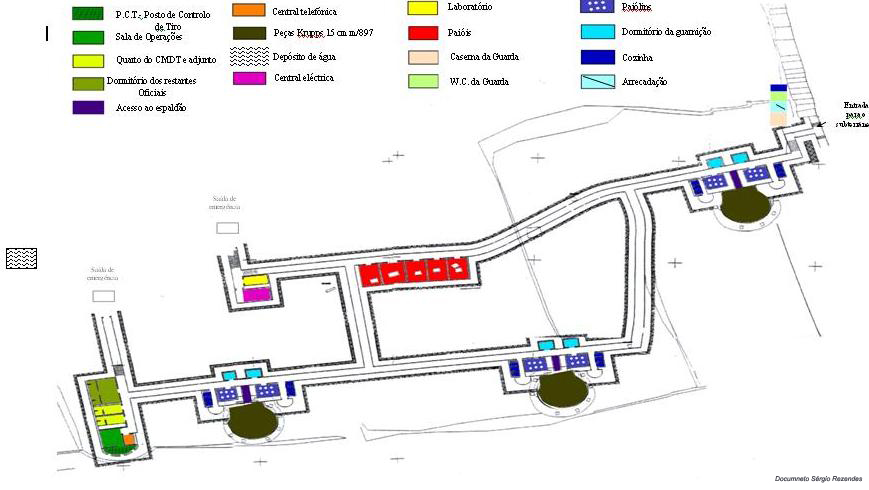The Milregos battery started to build at same time that Casalinho battery (with an article in this blog), in 1916, as a complement to this last one (probably like in the 40s with 7st and 8st battery from the RAC), with one of them to be used at close range (we supposed Milregos) and the other at long range (Casalinho had 280mm guns). In 1919 and with the end of Fist World War, construction of both stopped. Only in August 29st, 1929 Casalinho was completed. With only one magazine house build and the acess road Milregos never see the day light. Casalinho quenched only it occurrued in the 60s, when 7st and 8st Battery were in full service, build not much far from the original first XX century Sado River Battery (8st is only 600 meters from Casalinho and probably about 3 or 4 Km from Milregos, but about last than 1 km from Outão fort, a much older artillery position). So we can't only speculate how would Milregos battery be (at least without a much bigger investigation, involving the Army files and much longer available time).
 |
| Fig.1 - This picture is probably the only of the unique struture of Milregos Battery. Only this bulding and the clay road were build in more then 13 years since the construction started. Today in that place is Outão Camping and the ruin it was recovered to be inserted in the Park. |
When Germany declared war to Portugal in 1916, coastal defence were made with mobile guns from the army in association with navy ship units and others from aviation. The main problem were german submarines that in some occasions used their guns to bombard main land (even Lisbon was a victim of this attacks with destruction and a mortal civillian). The need for a costal defence, in the main porst of all the nation, compounded by priority of the intense naval traffic in the vew of the cost and the need to protect, was assumed by Portuguese Governement and the Battery of Casalinho and Milregos was part of the sollution.
The objective was the protection of Setúbal bay and port, but like most of the portuguese military constructions money and labour problems made that only Casalinho was build and operational in 1929 and Milregos had only one small fraction build, after some interruptions. That we now, Portugal never had guns for this position especially buy. Maybe stock guns were the sollution but this is only speculation.
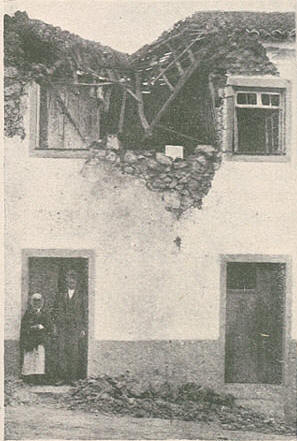 |
| Fig. 2 - Mr. Francisco do Rego house hit by one of the more than 50 shells from the guns of U155. Miss Tomásia Pacheco died from this attack. Thanks to the battery commanded by Alféres António da Costa who fired against the germans from more than 6000 meters, the action of the submarine ended. |
Since Milregos battery was never completed and we don't have access to army files from here (maybe in a near future), we only can make a fiction exercise about how would be and wich type os guns would be used. When RAC completed the 7st and 8st battery after WWII near Setúbal in simillar positions, one was a longe range function (Outão with british 152 mm guns) and the other close range (Albarquel with 150 mm german guns). So, it is possible that Milregos was planned was a short range gun position since Casalinho Battery had 280mm guns with a range of about 50km.
The guns are also a speculation exercise since guns in Portugal for this type of army facilities were various calibres and from army and naval provenance. Half buried or using vegetation and camuflage net the position woud be very difficult to see from a ship some kilometers in the river imput but the low geografic location and the ship aproach will make impossible a long distance fire. It is a mystery were the fire control and observation post would be placed in Milregos Battery but Outão fort was in a way of speaking the best location.
 |
| Fig. 3 - Figueirinha Beach and the narrow channel to Setúbal Port. Outão and Milregos are near a the distance range to a ship is this channel is less than a one Km. |
Another problem that was found in the construction of Casalinho and Milregos Battery had to do with expropriation of land in Comenda Farm, since the two areas were property of the noble Armand Roger Ernest Marie Joseph. The final business was only made in 1929 with the heirds of the cond Armad, but all the process biggins in 1919. Probably the price of Casalinho, the slow expropriation process and the geographic positions that become the artillery fire efficiency reduced (only the area between Outão and Albarquel was easily coverin, specially in the Troia peninsula direction), resulted that Milregos Battery was never completed. The chronic lack of money and the traditional neutrality that Portugal assumed especially by the internal problems and the need to secure the empire, translated into a come back of costal artillery in Setúbal area only when WWII biggin. In that time and becouse the planned Battery by all the country lead to some years of hard construction labour, hundreads of movel doble guns positions (AA and surface shoot) were spred in all the Portugal territory, since Europe to Ásia. (
http://mindelosempre.blogspot.pt/2012_08_01_archive.html)
 |
| Fig. 4 - A British Sunderland in Troia in II World War time. Even being neutral Portugal had to deal with hundreads of ships and planes in the territory between 1939 and 1945. |
 |
| Fig.5 - "Ribeira da Ajuda" in Comenda Farm, about 5 km from Setúbal. Is right that Milregos Battery was started to build in the left margin but the place is almoust 1 km from that small river. |
 |
| Fig.6 - A portuguese shelter with a 75mm gun in France in WWI. Before fixed coastal artillery positions the guns used by the army in portuguese coast were mobil. |
 |
| Fig. 7 - As far we know this is was the correct location of Milregos battery. Today is a camping park. |
 |
| Fig.8 - Casalinho Battery was build with a rail system for when the 280 mm german guns fired. The magazine was similar to this one in Hawaii. It is very unlikely that Milregos were completed like Casalinho because was a short range station. |
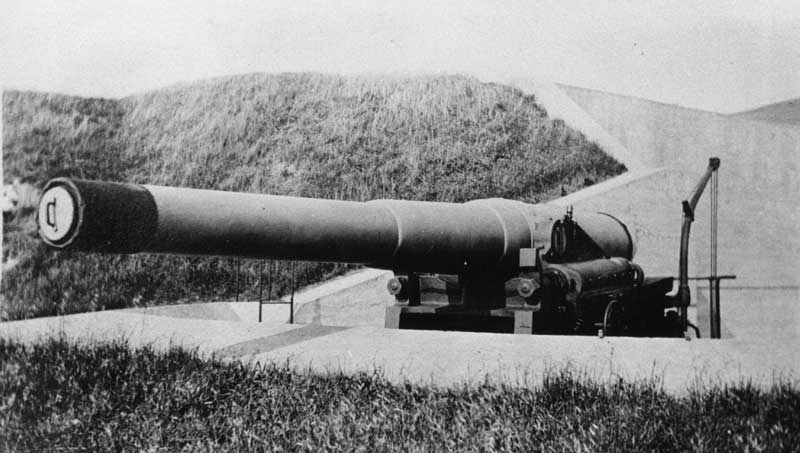 |
| Fig. 9 - Battery Drew in Angel Island at USA. Made the first stone in 1898 and ended in 1900. This picture was made in 1915. The used of Portugal Coastal Regiments of this type of guns never it happened, but USA used a similar type in 1917 at Azores. |
 |
| Fig .10 - The 6 inch guns of Macaulay Point between 1923 and 1938. Made to protect the harbours of Victoria and Esquimalt in Canada, they were obsolete in 1956. Portugal used for this missions Vickers and Krupp models in RAC. |
 |
| Fig. 11 - Another 6 inch gun of the Macaulay Point but in a lower position. It is supposed that Milregos battery was a close range united, becouse in that area of Sado river the ships are very close to the coast. |
 |
| Fig.12 - Battery Maxwell Keys in Philippines in the 30s. Another possibility for Milregos, though Portugal used German and British models. |
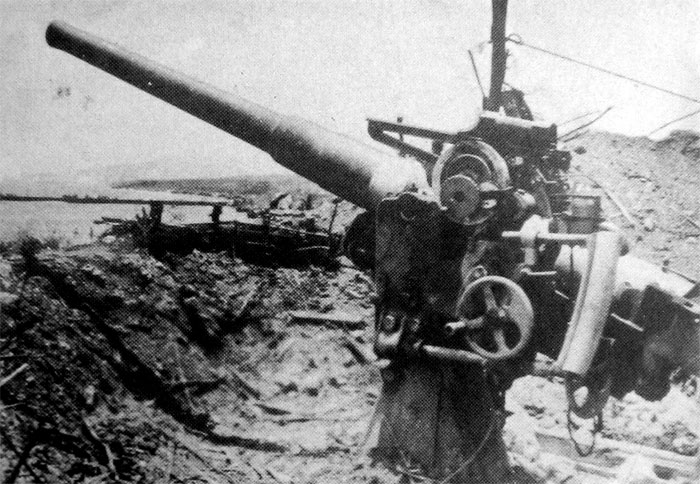 |
| Fig. 13- A 76,2 mm Japanese Gun, original made in 1914. Naval small caliber guns was another possibility. Was we know the 280mm were the bigger guns used in Potugal. Others were between 115mm and 234mm. |
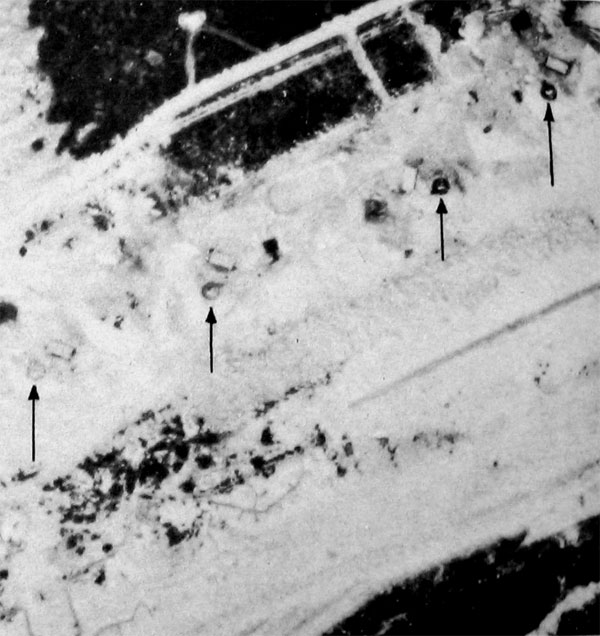 |
| Fig. 14 - Gun inplacement in Wake Island with four 120mm artillery. In Portugal Coastal Artillery positions had in most cases 3 or 4 guns. |








